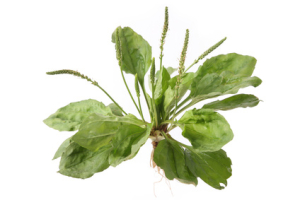AmishCreek.com Features Old-Time, Amish Remedies
As changes in the healthcare industry and loss of health insurance cause millions of Americans to be responsible for their own health care, getting to know these old-time Amish remedies is a smart idea.
Lancaster, PA, June 05, 2012 --(PR.com)-- Chickweed. Plantain. To the average homeowner, these are weeds, plants to be sought out and destroyed, the bane of a beautiful lawn. For Amish and Mennonites, salves and ointments made from these very same plants are trusted staples in almost every medicine cabinet.
Amish and Mennonites, who live close to the land, have accrued literally generations of knowledge about how to use the plants that surround them to stay healthy. They’ve felt for a long time, for instance, that plantain has astringent, antimicrobial, and anti-inflammatory properties. Amish collect these three- and five-veined green leaves, chop them, mix them with other ingredients, and use the concoction as a salve for insect bites, poison ivy rashes, minor sores, and boils. The result is a clean, natural remedy—nearly instant relief!
Even the manufacturers of big-name medicinals know the value of plantain and other plants. Seed husks from the P. psyllium, for example, are used in a number of brand-name laxative and fiber products.
Another Amish-inspired product found in many medicine cabinets is a salve used for burns. It’s a carefully crafted mixture of organic and wild-crafted ingredients such as honey, lanolin, olive oil, marshmallow root, and myrrh. The myrrh, referred to in the Bible as the “balm of Gilead,” is used for its antiseptic properties. “Country Mom,” writing on a website for medical professionals, says of the salve, “I find their results nothing short of remarkable.”
Finding these and other similar old-time remedies is not easy, since Amish and Mennonites keep mostly to themselves, avoiding contact with the outside world. But one company, AmishCreek, actually specializes in Amish and other old-time remedies. Located in Lancaster County, Pennsylvania, the company has been in business since 1983 and has recently launched its own website, AmishCreek.com.
As changes in the healthcare industry and loss of health insurance cause millions of Americans to be responsible for their own care, getting to know these old-time remedies is a smart idea. Why not make them part of your medicine cabinet!
Amish and Mennonites, who live close to the land, have accrued literally generations of knowledge about how to use the plants that surround them to stay healthy. They’ve felt for a long time, for instance, that plantain has astringent, antimicrobial, and anti-inflammatory properties. Amish collect these three- and five-veined green leaves, chop them, mix them with other ingredients, and use the concoction as a salve for insect bites, poison ivy rashes, minor sores, and boils. The result is a clean, natural remedy—nearly instant relief!
Even the manufacturers of big-name medicinals know the value of plantain and other plants. Seed husks from the P. psyllium, for example, are used in a number of brand-name laxative and fiber products.
Another Amish-inspired product found in many medicine cabinets is a salve used for burns. It’s a carefully crafted mixture of organic and wild-crafted ingredients such as honey, lanolin, olive oil, marshmallow root, and myrrh. The myrrh, referred to in the Bible as the “balm of Gilead,” is used for its antiseptic properties. “Country Mom,” writing on a website for medical professionals, says of the salve, “I find their results nothing short of remarkable.”
Finding these and other similar old-time remedies is not easy, since Amish and Mennonites keep mostly to themselves, avoiding contact with the outside world. But one company, AmishCreek, actually specializes in Amish and other old-time remedies. Located in Lancaster County, Pennsylvania, the company has been in business since 1983 and has recently launched its own website, AmishCreek.com.
As changes in the healthcare industry and loss of health insurance cause millions of Americans to be responsible for their own care, getting to know these old-time remedies is a smart idea. Why not make them part of your medicine cabinet!
Contact
Amish Creek
Joe Miller
610-413-3904
www.AmishCreek.com
Contact via email only.
Joe Miller
610-413-3904
www.AmishCreek.com
Contact via email only.
Multimedia

Amish Use Commonly Found Plants for Medicine
Plantain-based salves are just one way that Amish and Mennonites use the plants around them to stay healthy. Higher resolution photo available for print. Copyright information: © chungking - Fotolia.com
Categories
